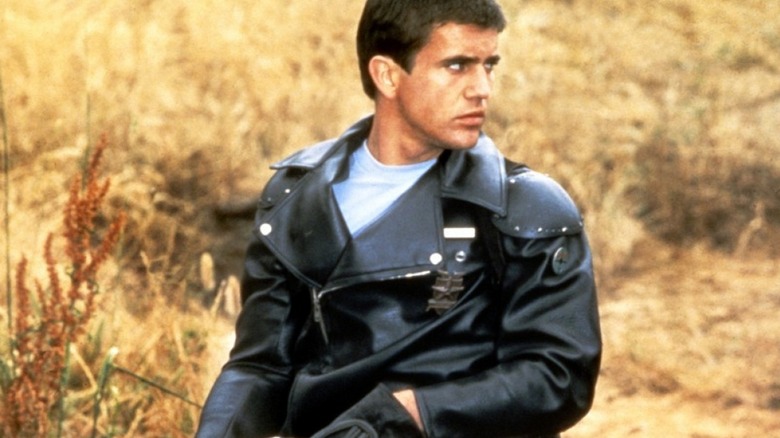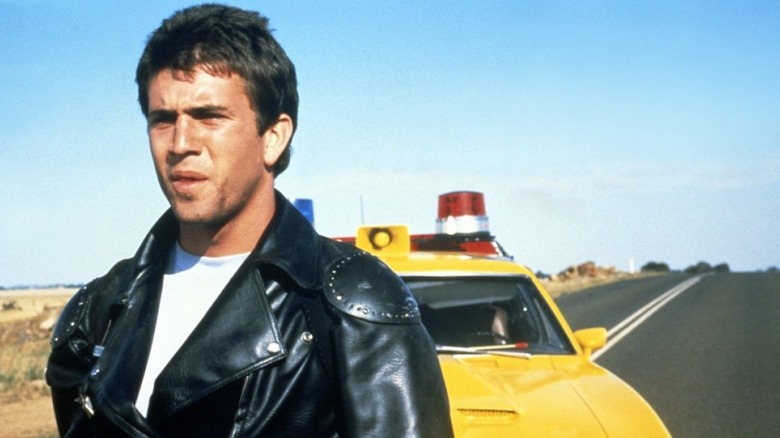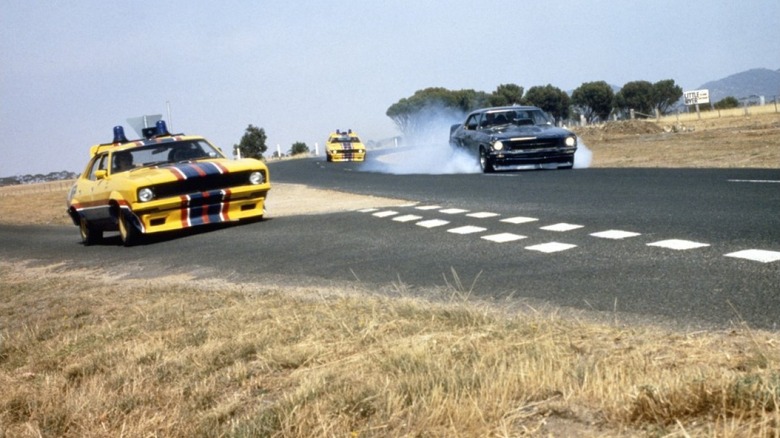The Grim Real-World Inspiration Behind The Mad Max Franchise
Three of George Miller's four "Mad Max" films have been decidedly post-apocalyptic. 1981's "The Road Warrior" took place in a desert that was peppered by bondage-gear-wearing thugs who sought to infiltrate and loot the fortified bases of those who thought to salvage water and gasoline. 1985's "Mad Max: Beyond Thunderdome," after an amusing dalliance in the titular fighting arena, found a tribe of children who vaguely remembered the world prior to an unnamed apocalyptic cataclysm.
It seems that the Earth descended into "we have a Thunderdome" territory in the span of less than a decade. Meanwhile, 2015's "Mad Max: Fury Road" went full-tilt into fable territory, depicting a world as it might look a few generations after the apocalypse. Continuity isn't so much an issue with the "Mad Max" series, however, as Miller finds the world more interesting than any definable story arc.
There was, however, a definite starting point. The 1979 original, "Mad Max," took place in a mid-apocalyptic world. There were still operational cars, still a working police force, and still remnants of civilization. Whatever cataclysm happened to create the world of "The Road Warrior" was still happening in "Mad Max." The world was merely in decay.
It seems that the decaying world was drawn from Miller's own personal memories of his childhood hometown. He was raised in a suburb of Darling Downs called Chinchilla, located in southern Queensland, and would eventually grow up to work as a medical doctor in the local hospital. It seems that Miller frequently treated victims of local car crashes, an all-too-common occurrence. According to a 2006 video interview with the National Film and Sound Archive of Australia, real-world violence inspired Miller to invent a dark world that was falling apart.
Just kids and their cars
The very geography of Chinchilla, Miller said, seemed to encourage speeding. There were a lot of long, flat roads that were ideal for pushing a car's limits. Miller first noticed his town's geography when he was a teenager in the late 1950s and early 1960s when he and his friend had first started driving. He recalled that several people he knew were victims of car-related violence. In his words:
"There's no question that 'Mad Max' was influenced by my childhood in rural Queensland, which Chinchilla itself is west of the Darling Downs. Completely flat roads, loamy soil, heat haze, burnt land. And with a very intense car culture. I mean, the main street of town and Saturday night with just the kids in their cars. By the time we were out of our teens, several of our peers had already been killed or badly injured in car accidents. And there was just those long, flat roads where there was no speed limit and people would just go."
George Miller does mention how much the deaths of his peers bothered him, but he did go on to recall his time as a medical doctor, and how seeing the blood firsthand started to deeply affect him. Miller looked at the constant car and motorcycle crashes, and his imagination began to wander into some dark territory. He said:
"And it obviously had a big ... impact on me. And it wasn't until I ... ended up being a doctor in emergency and seeing the kind of carnage as a result of car accidents or bike accidents that it kind of got into me, kind of disturbed me quite a bit. And I think all of those things were kind of part of the mix of the 'Mad Max' films, particularly the first one."
The practical reasons
Miller has said repeatedly that he loves the old-world melodrama of silent films, feeling the format to be a purer form of cinema than talkies. He has said repeatedly that he has been influenced by the works of Buster Keaton. As such, when he conceived of "Mad Max," he wanted it to be just as heightened as over-the-top as the silent films of yore. But Miller felt that maybe it was too over-the-top for the present and conceived of a time jump. He said:
"We set the film in the future mainly because once I basically contrived the story — which was very, very intense in this instance — it felt like there was just too hyperbolic, it was totally exaggerated. So we thought if we settled in the future, it might take on a sort of a fable-like quality. But we didn't have enough money to really set into a far future and degrade it down. So it's set in the near future. By the time we made the second film, 'Mad Max 2,' we're able to do a little bit more."
Of course, Miller admitted that he never intended to make a "Mad Max 2," but, well, inspiration struck. A story idea came to him and he merely followed his heart. In the same interview from 2006, he even admitted that he was already kicking around ideas for a fourth "Mad Max" movie, the film that would eventually become "Mad Max: Fury Road" some nine years hence.
Given that Miller, now 78, is currently finishing work on a fifth "Mad Max" film — a spinoff called "Furiosa" starring Anya Taylor-Joy as the character played by Charlize Theron in "Fury Road" — speaks to how much he thinks about those grime car accidents from his youth. Some things, it seems, mark you forever.


